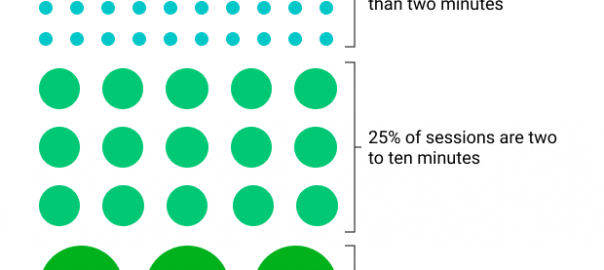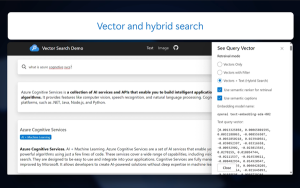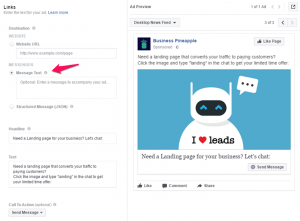How will the world change in 10 years? What can your agency do to keep up? Find some answers in this blog post.
Let’s rewind the clock to January 2010. The iPhone is barely three years old. Facebook is two years away from its IPO. And Uber wouldn’t have its beta launch until May.
Fast forward to 2020 and the world looks drastically different. The smartphone, still nascent in 2010, is now everywhere. Amazon has completely conquered retail. Electric cars are mainstream. And social media has changed how we communicate (and who we communicate with).
Then, of course, there’s the matter of an unprecedented, world-changing pandemic.
Can you imagine how different the world would be in 2030?
As hard as it might be to look into the crystal ball, as an agency leader, you have to keep one eye on the future. The world is changing rapidly. Being relevant a decade from now means embracing emerging trends and technologies.
While I can’t claim to be clairvoyant, I’ll attempt to understand the world in 2030 in this article. I’ll look at the future of marketing, and how you can prepare for it, today.
Predicting Macro vs Micro Trends
Will AR/VR finally have its moment? Will 3D printing go mainstream – as proponents have predicted for years? Will hydrogen fuel cell cars compete with electric cars?
I can’t really say. Nor can anyone else – at least not with any degree of certainty.
This is the key challenge in “future surfing”. Micro trends – what technologies become popular, which platforms dominate, etc. – are very hard to predict. In 2010, no one could have honestly predicted the outsized impact Uber would have on our lives. Nor could you have foreseen the development of the smartphone in 2000.
Which is why I say that focusing on micro trends is futile.
Instead, to be future-ready, you have to focus on macro trend movements.
Think of macro trends as large scale changes with lasting impact on the way we live, consume, and create. Macro trends usually cover entire groups of technologies and last for 10+ years.
This infographic shows the difference between different types of trends and their timeframes (Image source)
Social media is a macro trend, as is automation.
Predicting micro trends is fraught with risk, but piggybacking on macro trends is a safer bet. You might not be able to predict if Instagram will be relevant in 2030 or not, but it’s safe to say that social media will still be a thing in a decade.
If you want to build a future-ready business, you have to focus on macro trends. If you’re, say, a “social media agency” instead of an “Instagram marketing agency”, you’ll have the foundations to pivot to any emergent social media trend.
Keep this in mind as we look towards 2030 – and beyond.
The World in 2030 – And How to Prepare For it
Predicting the future is inherently difficult. We’re all working with incomplete information and extrapolating the present. This can’t account for new disruptive trends (such as the iPhone launch in 2007) or predict Black Swan events (like the COVID crisis).
We tried our hands at prognostication last year when we covered the future of marketing.
But with its marketing focus, this prediction was too limited in scope. It was also meant for a world before COVID.
Given everything that’s transpired so far this year, it’s time to reimagine the world in 2030. What does the future look like? And more importantly, what can you do to prepare for it?
Here are five changes we envision in the world:
1. Remote work reshapes the world
If there’s one thing everyone agrees about COVID, it’s that it has dramatically accelerated burgeoning trends.
Take remote work. It’s no secret that remote work was already an up and coming trend – the percentage of Americans working remotely has steadily risen over the years.
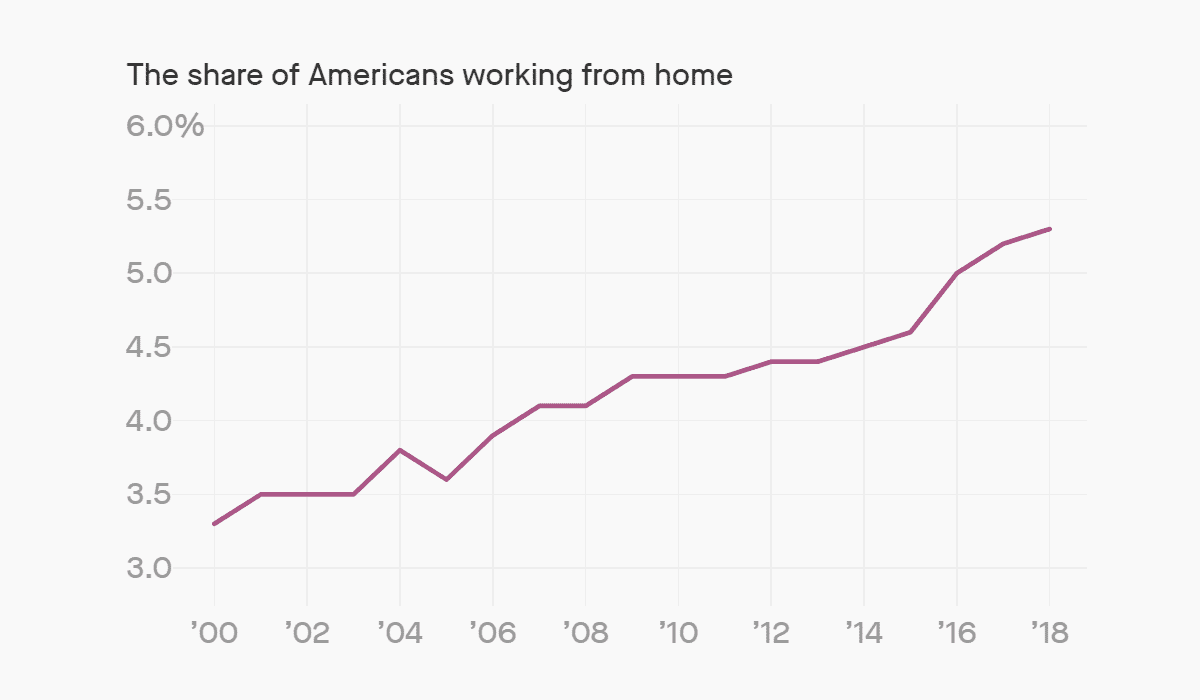
But the COVID crisis has pushed this trend into the mainstream. The lockdown literally forced businesses to adopt remote work or perish. Though the lockdowns might have ended, a lot of businesses as well as employees are reluctant to return to the office.
Gartner estimates that at least 48% of knowledge workers (i.e. most agency employees) will work remotely part-time compared to 30% before the pandemic.
This shift to remote work won’t just change businesses, it will also reshape the world.
The last few decades had witnessed large scale migration to major urban centers. Much of this was economic – you moved to the city because that’s where the jobs were.
In a world where your work isn’t tied to your location, does it even make sense to stay in an expensive city? Already, badly hit cities like New York have seen a slew of people leaving. As remote work becomes the norm, expect this trend to accelerate.
How it affects you
The shift to remote work can be a blessing for agencies. For starters, it reduces one of your biggest fixed costs – office rent.
Moreover, it gives smaller, more nimble agencies a chance to compete against bigger players. Older agencies might not have the organizational structures to support remote work. Some might even be reluctant to shift, bogged down by old habits and entrenched interests.
But a smaller agency doesn’t have the same limitations. You can adopt newer communication systems and change your organizational structure much faster.
If you can be successful at remote work, you might be able to attract better talent and ergo, better clients.
2. The everything-as-a-service economy
Do you remember how you used to buy software 20 years ago?
Unless you were one of those rare people with a fast internet connection, you bought software on CDs sold at physical electronics stores.
Software-as-a-service (SaaS) changed that completely. $ 5,000 software that a business would otherwise have to save for was suddenly far more accessible at $ 150/month. It disrupted entire industries and is quickly becoming the de facto mode for selling software.
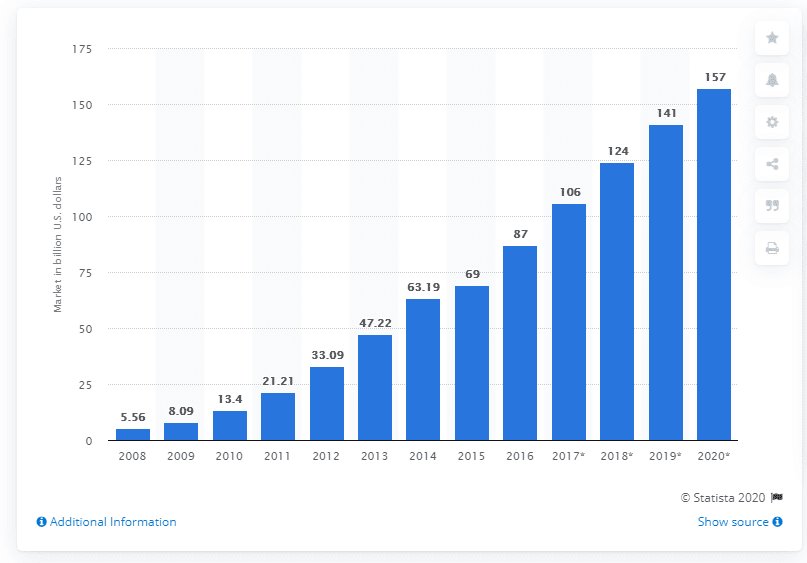
The enterprise SaaS market has grown from less than $ 6B in 2008 to $ 157B in just over a decade (Image source)
But SaaS just the harbinger of a much bigger trend:
Everything-as-a-service.
You might call it the “on-demand economy” or the “subscription economy”, but it means the same thing: the unbundling of a service from its cost of ownership.
If you wanted a chauffeured car, you’d have to buy the car and pay the driver’s monthly salary. But with Uber, a chauffeured car is just a tap away.
Similarly, if you wanted a movie library with thousands of titles, you’d have to spend an exorbitant amount of money. But Netflix makes it possible for just $ 10/month.
Office space (WeWork), storage (DropBox), even computing resources (AWS) are now accessible via a one-time or monthly fee.
Suffice to say, the “end of ownership” will have a lasting impact on the world. You will have more flexibility and freedom in deciding what to buy and how long to keep it. Long contracts and top-heavy purchases will be a thing of the past.
How it affects you
In the agency world, a brand would have an agency of record, and perhaps a number of smaller agencies for dealing with specialized work. If you were the agency of record, you’d usually have a long contract and a guarantee of work.
But in an “everything-as-a-service”, marketing, too, can be sold as a service. Brands might choose to engage with agencies on a monthly basis instead of establishing an agency of record. Some might go even beyond that and hire on-demand talent directly.
Any agency that positions itself for this world will stand to benefit. You can offer increased flexibility to your clients while keeping the costs low enough to attract a larger client base.
This is particularly effective if you’re a smaller agency competing against entrenched players.
Of course, reorienting yourself for an “everything-as-a-service” world is less about adding a monthly payment plan, and more about reorganizing your business. Minus guaranteed AoR contracts, you have to constantly find new work. You also have to structure your business to expand (or even shrink) as per market demand.
3. The human-tech relationship
At the dawn of the last decade, smartphones were still something of a novelty. Sure, you were on Facebook and LinkedIn, but you probably didn’t spend all your time glued to the screen.
That has changed drastically in the last decade. An entire generation of “digital natives” has come of age since then. The smartphone isn’t a novelty anymore; it’s akin to a fifth limb.
(Recall the panic you feel when you forget your phone somewhere.)
Our relationship with smartphones underscores the changing nature of the human-tech partnership. While we’ve been steadily moving towards more and more tech adoption, the presence of technology has never been more dominant than today.
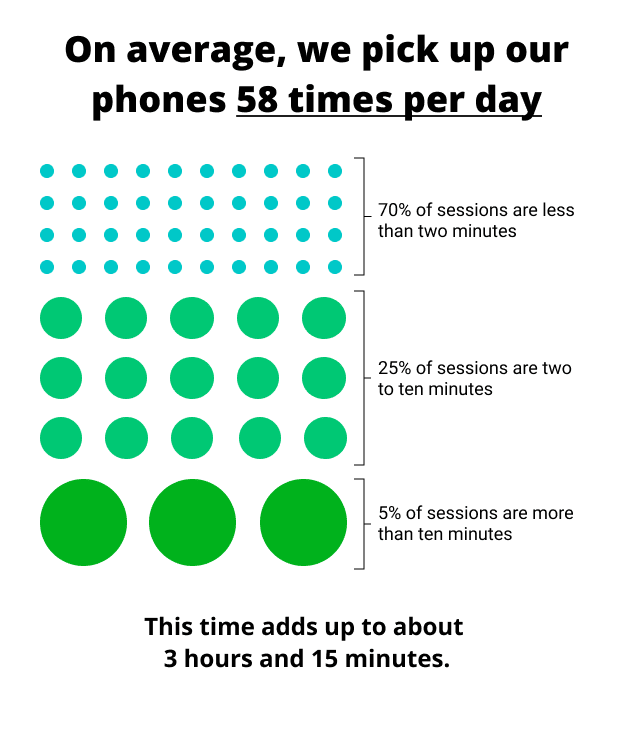
Case in point: The average person spends upwards of 3 hours/day on their smartphone (Image source)
Our homes have smart speakers, our wrists, smartwatches, and our hands hold smartphones. There is a “smart” version of practically every device you own.
And it’s not just about devices.
Technology is affecting how we view reality and relationships. Much of our communication happens over technology (a trend accelerated by the COVID crisis). We get our news and entertainment through the internet. Even romantic partnerships are mediated by technology.
In the coming decade, this human-tech partnership will only deepen.
Sure, there will be enclaves of tech-free spaces (and perhaps even emerging neo-Luddism), but for the majority, technology will mediate their reality.
How exactly this changes the world is hard to predict. Artificial Intelligence might open up vast new cognitive possibilities. Automation might change how we work. And robotics might even change who works.
Much of it depends on how technology progresses and how we respond to it.
But one thing is for certain: the human-tech relationship is only going to become more entrenched over time.
How it affects you
In a world dominated by technology, any agency that knows how to wield technology well stands to benefit greatly.
Sure, creativity is still your biggest forte, but you will have to increasingly adopt technology – both in how you work and what you sell to clients.
Increasingly, you’ll have to tie your offerings to technology. Being a purely creative shop might not be enough; you’ll have to leverage technology in your work to be relevant.
Again, this is something smaller agencies can do more rapidly. Bigger agencies that don’t have tech in their company DNA will find it difficult to compete against “digital native” agencies.
Retool your business now to embrace technology and you’ll reap the rewards in the next ten years.
Over to You
The world in 2030 will likely be very different from today.
While the specifics might vary, the way we work (remotely), the way we buy/sell (on-demand), and the way we live (through technology) will certainly change by 2030.
Reorient your business today and you can reap the benefits in the coming decade.
Business & Finance Articles on Business 2 Community
(61)
